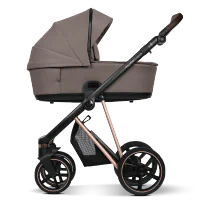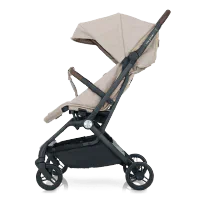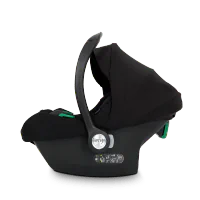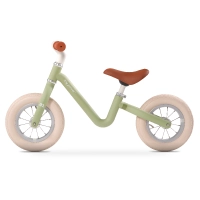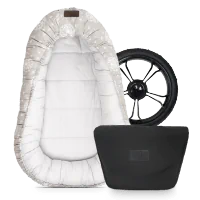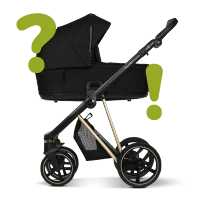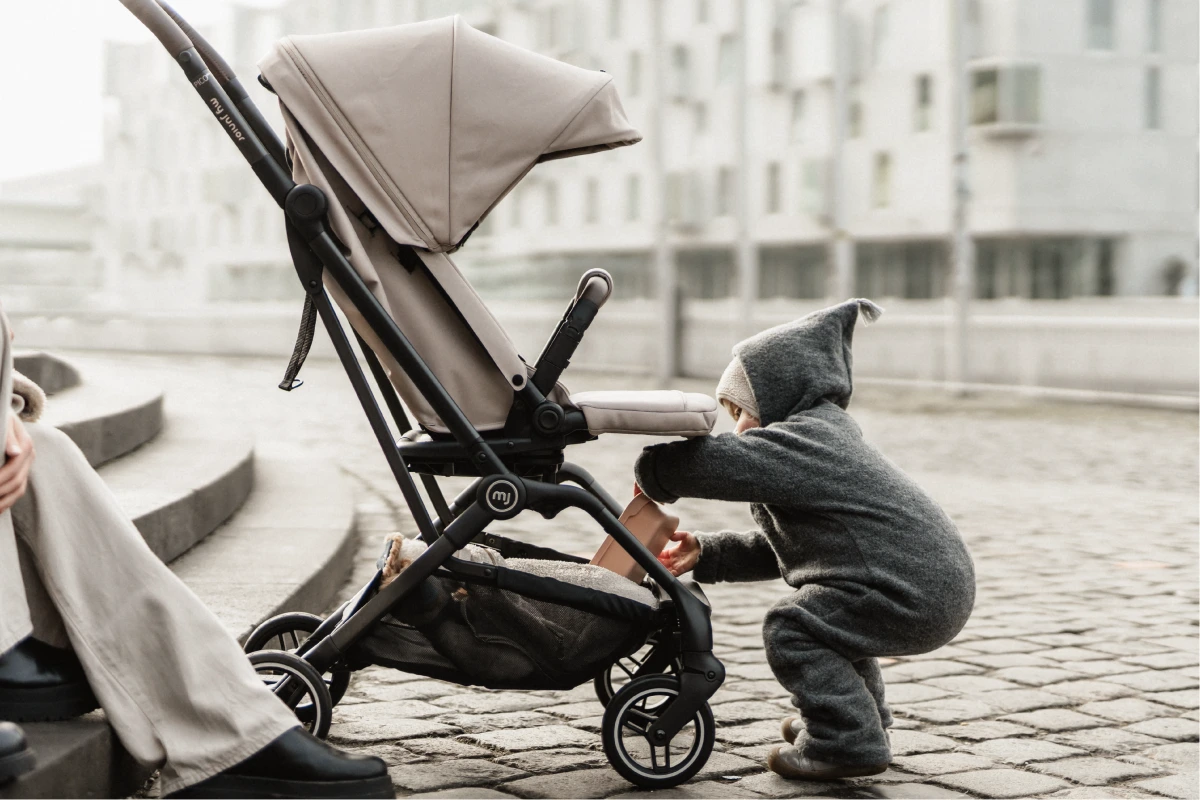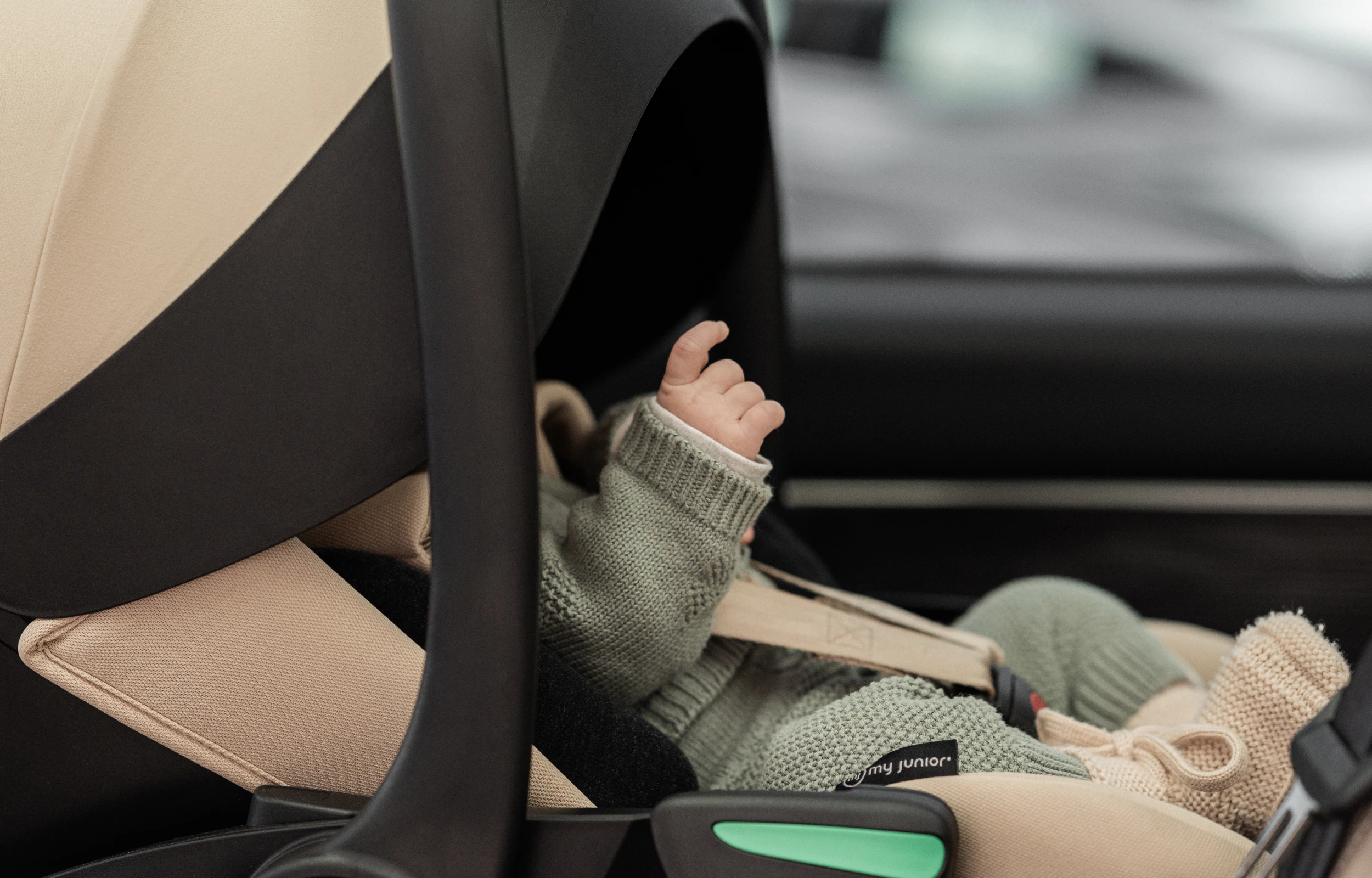
When can children sit in the front?
Everything you need to know
The idea of letting your little one ride up front in the car quickly raises many questions: Is it really safe? From what age or height is it allowed? And what exactly does the law say?
One thing is certain: for parents, safety always comes first. Whether it’s the very first journey after birth, the daily trip to nursery, or a family outing, your child should be as well protected as possible on every car journey.
The good news: with the right preparation and a suitable child seat or booster, you can transport your little one up front safely.
In this article, you will find out:
• From when children are allowed to sit in the front of the car
• Which legal requirements apply to child seats
• Which infant carriers, rear-facing seats and booster seats are suitable
• What to consider regarding types of attachment
• And which tips can make everyday life with a child in the car more relaxed
• Because no matter if your little one is tiny or already grown a bit – your treasure deserves maximum safety. In every seat. On every journey.
Table of Contents:
1. Legal Foundations
2. Child Seat on the Front Passenger Seat
3. Obligation to Use Child Seats and Booster Cushions
4. From When Without a Child Seat
5. 6 Tips for Safely Securing Child Seats
6. From When Can Children Sit Facing Forwards
7. Frequently Asked Questions on “From When Can Children Sit in the Front”
Legal Foundations: From When Can My Little One Sit in the Front?
In Germany, the Road Traffic Regulations (StVO) clearly stipulate from when children are allowed to sit in the front of a car/children on the front passenger seat and how they must be secured. The basic rule is: Children under 12 years of age and with a height under 150 cm may only be transported with a suitable restraint system, i.e. a seat or booster cushion. This applies regardless of whether the child is sitting in the front or in the back.
If your little one is sitting in the front next to you, the child seat being used must be approved for this position. Important for rear-facing seats such as infant carriers: The airbag must be deactivated. In an accident, an activated airbag can pose a real danger to your child.
Although there are only a few exceptions to this rule, the principle remains: children are safest travelling on the back seat. Many experts therefore recommend letting your small passenger travel in the back for as long as possible.
If you are on the road with your little one in the car, the responsibility for correct securing always lies with you as the driver. Only in this way is your little miracle as well protected as possible – even if the worst happens.
It is clear: Anyone who violates the child seat requirement must expect fines and points in Flensburg. But much more importantly: Only with the right seat, correct adjustment, and a few important precautions will your child travel safely, even on the front passenger seat.
Is my child allowed to sit in the front?
Many parents ask themselves: Is my child allowed to ride in the front and is it actually safe? The answer is: Yes, if certain requirements are met. A child seat on the front passenger seat can be safe as long as it is approved for this position and the legal requirements are observed.
Deactivating the Airbag – A Must for Rear-Facing Seats
An important point when riding in the front: the airbag. If your little one is in an infant carrier or rear-facing child seat, the front passenger airbag must absolutely be deactivated. Why? Because a triggered airbag can cause serious injuries in an accident.
For a forward-facing seat, the airbag can usually remain activated – but even here it is important to adjust the seat so that there is sufficient distance from the dashboard.
Safety Aspects: Advantages and Disadvantages of the Front Passenger Seat
One advantage: You can always keep a good eye on your child in the front – especially practical with infant carriers. In some situations, this can give you greater peace of mind.
But: Experts recommend letting children ride in the back seats for as long as possible. In the event of a side or frontal collision, the rear seats simply offer more protection.
Child seat and booster seat requirement: What applies from which age?
Transporting children safely in the car is clearly regulated by law. As long as your child is shorter than 150 cm or younger than 12 years old, they must be secured in an appropriate child seat. But what options are there, and when is the right time for a booster seat?
Baby seat, child seat or booster seat – What is needed and when?
Infant carrier: From birth, the infant carrier is the first choice for your newborn. Rear-facing models provide especially good protection for your baby's delicate neck and are suitable for weights of up to around 13 kg.
Child seat: As soon as your little one has outgrown the infant carrier, a rear-facing seat or a forward-facing seat follows. However, there are also models like our CYRO 360, which you can use from the birth of your little one.
Booster seat: From a height of around 125 cm or an age of about 6 years, the booster seat comes into play. It ensures that the seatbelt runs correctly over the shoulder and pelvis.
How long is the requirement for a child car seat in place?
The obligation to use a car seat or booster seat ends in Germany as soon as your child is either 12 years old or taller than 150 cm. After that, only the general seatbelt requirement applies. Nonetheless, experts recommend securing children in an appropriate seat for as long as possible to ensure maximum protection.
What should you pay attention to?
When choosing the right seat, pay attention to your child’s height and weight. Test winners and models with i-Size certification often offer additional safety features. It is also essential to regularly check the safety belts or Isofix anchorages to ensure correct installation.
Child seats and booster seats are not only required by law but also provide important protection for your child.
From what age can my child travel without a child seat?
The requirement for children to use a car seat in Germany ends as soon as your little one is either 12 years old or taller than 150 cm.
Why is the correct securing so important?
Your child's height plays a crucial role. The seat belt in a car is designed for adults and often does not fit smaller children properly. Without a booster seat, the belt may run across the abdomen or neck, which can lead to serious injuries in the event of an accident.
Additional safety thanks to i-Size infant carriers and rear-facing car seats
For younger children who are not yet able to travel without a seat, i-Size infant carriers or rear-facing seats remain the best choice. They offer optimal protection and take into account your child's height, thereby significantly reducing the risk of injury.
6 important tips for the safe installation of child seats in the car
No matter whether it’s a baby car seat, rear-facing seat, or booster seat – proper installation is absolutely essential if you want to transport your precious cargo safely in the car. Only a correctly installed child seat can provide the protection your little passenger deserves.
So that you feel good on every journey, we have put together six practical tips for you here. This way, the child seat is exactly where it belongs – secure, safe, and suitable for children.
Whether on the front passenger seat or the back seat: these tips will help you to secure your baby car seat, rear-facing seat or booster seat perfectly – for relaxed car journeys with your little one.
Overview of Types of Fastenings
Isofix: The Isofix system provides a connection between the seat and the vehicle. Control indicators show you whether the fixation has been carried out correctly. A base station makes installation easier and minimises the risk of errors.
3-point seat belt: Many seats can alternatively be secured with the car's seat belt. It is important that the belt fits tightly and is routed through the designated points.
Avoid common mistakes
Loose fastening: Make sure that the child seat is installed firmly and without any play. A loose seat can greatly reduce its protective effect.
Incorrect belt routing: The belt must not be twisted or incorrectly positioned. With booster seats, the lap belt should run across the hip bones and the shoulder belt across the chest.
Unsuitable position: Rear-facing seats such as infant carriers may only be used on the front passenger seat if the airbag has been deactivated.
Control is crucial – for the secure fastening of child seats
Many modern child seats and baby carriers today are equipped with practical control indicators. These little helpers show you at a glance whether the installation has been carried out correctly – a real advantage, especially with Isofix base stations. This way, you know immediately: everything is in its proper place.
Check regularly – for maximum safety
Even once the seat has been properly installed, it’s worth doing a quick check now and then – especially after longer journeys or if you often fit and remove the seat. This is the only way to ensure that your little one continues to travel safely and securely in the car.
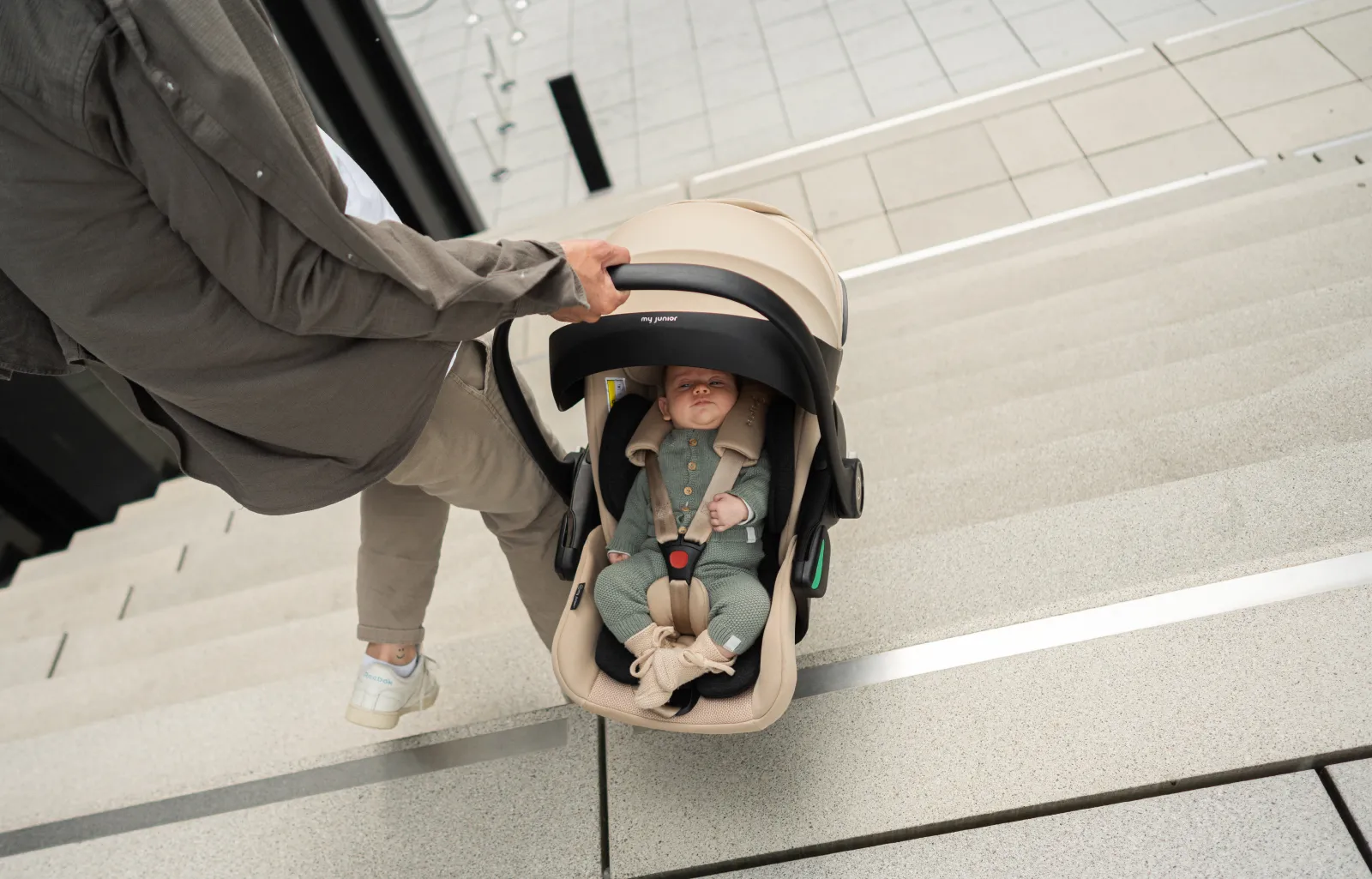
From what age are children allowed to sit facing the direction of travel?
Reboarder, i-Size & Safety in Focus
Many parents eventually ask themselves the question: From when is my child actually allowed to sit facing the direction of travel? A valid question – because the seating direction has a major impact on safety in the car, especially in the event of an accident.
Reversing: Why it is so important
Especially for babies and toddlers, experts recommend rear-facing travel for as long as possible. Why? Because the head, neck, and spine are particularly sensitive during the first years of life. In the event of a frontal collision, the rear-facing position offers better protection – the forces are distributed more evenly and the risk of serious injury is significantly reduced.
That’s why infant carriers and rear-facing seats are designed exactly for this purpose: they offer your little one optimal protection – especially in the first years.
Change of direction: When is the right time?
According to the law and the i-Size standard, children may only sit facing the direction of travel from around 15 months at the earliest. However, many experts recommend remaining in a rear-facing seat until the age of 4 – as even then, your child’s spine is not yet fully developed.
Our tip: Take your time when changing – and pay attention to your child's individual development. This way, your little one travels fully protected – no matter which direction they're facing.
Which child seats are suitable for switching?
When your child is old enough, you can switch to a forward-facing seat. Many child seats with Isofix or a base station offer the option to change between positions. This flexibility is particularly practical if you wish to adjust the seating direction.
Important safety aspects
Isofix use: A seat with Isofix offers maximum stability and reduces the risk of installation errors. Control indicators show you whether the seat is correctly secured – both in rear-facing and forward-facing positions.
The change in direction of travel should only take place once your child meets the physical requirements. Pay attention to the i-Size guidelines for height and age.
Side impact protection: Choose a seat with extra protection against side collisions to ensure your peace of mind all round.
Correct fastening: Regularly check whether the seat is securely installed, especially when it is being used in the forward-facing position. Isofix base stations make it easier to change the position and ensure a firm anchorage.
Even if children like to face forwards when travelling, safety should always take priority. Make use of the advantages of a rear-facing car seat with Isofix for as long as possible to best protect your little one.
Frequently asked questions about child seats and the front passenger seat
Is a 4-year-old child allowed to sit in the front seat of a car?
Yes, a 4-year-old child is allowed to sit in the front of the car, but only under certain conditions. It is important that an appropriate child seat is used, which complies with legal requirements and is optimally suited to your child's size and weight.
If your little one is travelling in a rear-facing child seat on the front passenger seat, the airbag must absolutely be deactivated. This is the only way to protect your child from the force of the airbag in the event of an accident.
Whether using Isofix or a 3-point seatbelt: The fastening must be secure and correct in order to comply with the seatbelt requirement – and, of course, to provide your little passenger with maximum safety.
How is a 5-year-old child allowed to sit in a car?
A 5-year-old child may only travel in a car in a suitable child seat – this must be appropriate for your child’s size and weight and comply with legal requirements.
When your happiness takes a seat in the passenger seat, it appliesPlease provide the German text you would like me to translate.
With a rear-facing child seat, the airbag must be deactivated to avoid any risk in the event of a collision. If you are using a forward-facing seat, the passenger seat should be pushed back as far as possible. This creates distance from the dashboard – and provides even greater safety.
No matter where your child is sitting: the right seat and proper fastening make all the difference – for relaxed journeys and all-round protection for your little one by your side.
From what age are children allowed to sit in the front seat of a car?
The basic rule is: children are allowed to sit in the front seat of a car from birth – provided they are secured in an appropriate child seat that matches their size and weight.
If you are transporting your bundle of joy in a rearward-facing child seat on the front passenger seat, the passenger airbag must be deactivated. This is the only way to ensure your child is as well protected as possible in the event of an accident.
As soon as your child is 12 years old or exceeds a height of 150 cm, they may ride in the front seat without a child seat. Important: the seat belt requirement still applies, of course – for both young and old, in every seat in the car.
When can a baby sit facing the direction of travel?
The clear answer: A baby may only sit facing the direction of travel from 15 months at the earliest.
Until then, child seats – especially on the front passenger seat – should only be used in a rear-facing position. This is because, particularly in the first months of life, the neck is especially sensitive, and in the event of a frontal collision, the strain is significantly reduced when in a rear-facing position.
Important: If the seat on the front passenger side is used, the airbag must be deactivated – this is the only way to ensure your little one is optimally protected.
Rear-facing seats such as infant carriers or reboarders offer additional protection and comply with the recommendations of numerous experts and the i-Size standard.
Our tip: Take your time with the transition – and don’t base it solely on your child’s age, but also consider their physical development.
Is a booster seat safe for older children?
Yes, a booster seat is also safe for older children, as long as it is used correctly. What matters is that the seatbelt is positioned properly: it should run across the shoulder and pelvis, and not the neck or over the stomach.
A booster seat can be used on the front passenger seat if your child is old enough and has reached the legal minimum height. This ensures that the seatbelt provides protection in the right places and that your little one is safe on the road, even on longer journeys.
Our tip: Regularly check how the seatbelt is positioned – especially during growth spurts. Even small changes in seating behaviour can affect the safety performance of the booster seat.
Conclusion
The safety of your little one in the car always comes first. Whether in the back seat or the front passenger seat – the right equipment and correct installation make all the difference when it comes to protecting your child as best as possible.
Opt for high-quality child seats with Isofix, i-Size certification and side impact protection. This way, you’re always on the safe side on every journey. Whether you’re looking for an infant carrier for your newborn or a booster seat for an older child: always make sure to choose tested quality and check the installation regularly.
Because only together do we ensure what really matters: safe, comfortable, and relaxed car journeys. For you and your happiness.

 Pushchair
Pushchair 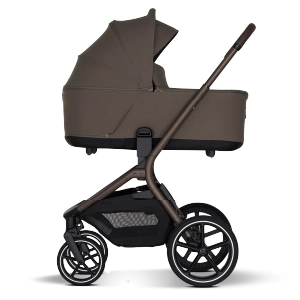 MAVI
MAVI 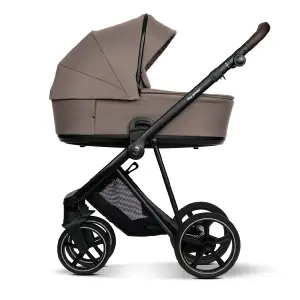 VIGO²
VIGO² 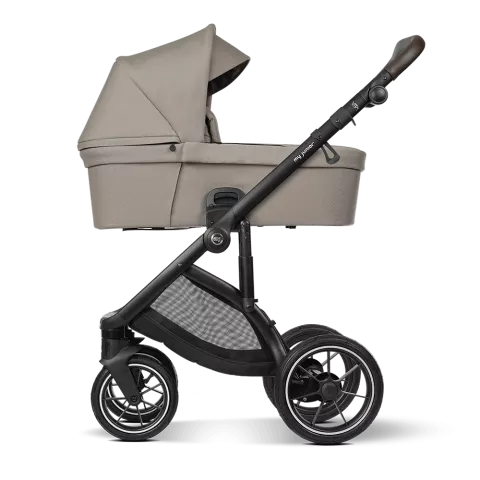 VITA unique³
VITA unique³ 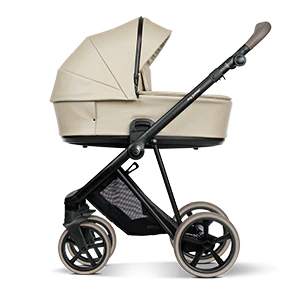 VIGO² Alcantara
VIGO² Alcantara 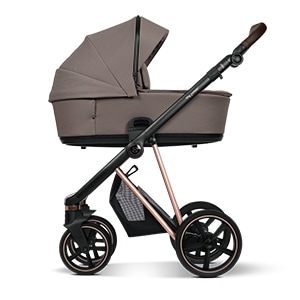 VIGO
VIGO 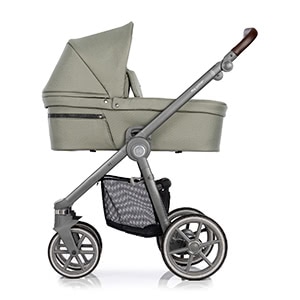 VITA HOPE
VITA HOPE  VITA unique²
VITA unique²  PICO³ with tub
PICO³ with tub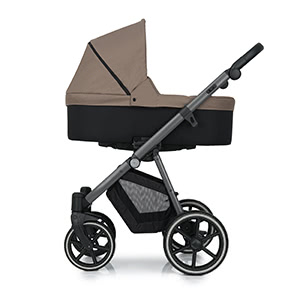 NOAX²
NOAX² 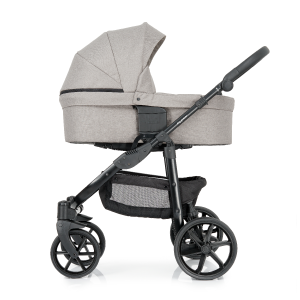 MIYO²
MIYO² 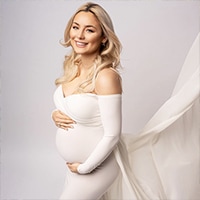 Pram tests
Pram tests  Consultation
Consultation 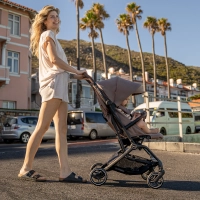 Buggies
Buggies 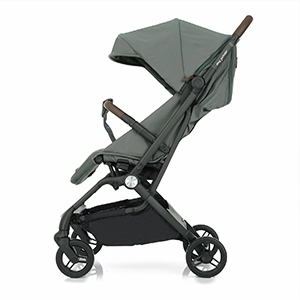 PICO³
PICO³ 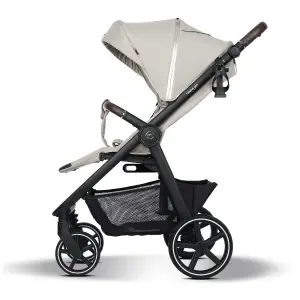 PLIA²
PLIA² 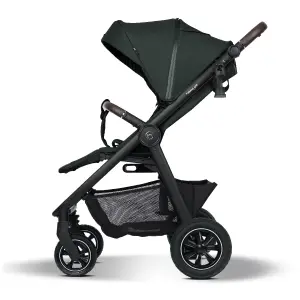 PLIA² Air
PLIA² Air 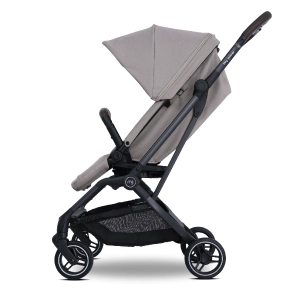 PICO³⁶⁰
PICO³⁶⁰  PICO³ with tub
PICO³ with tub 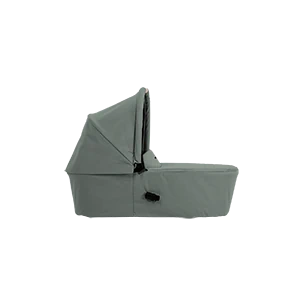 PICO tub
PICO tub 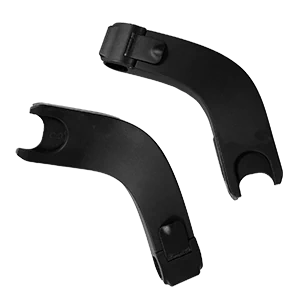 PICO infant car seat adapter
PICO infant car seat adapter 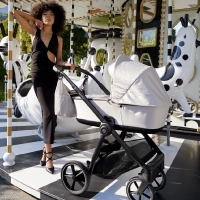 Limited Editions
Limited Editions 
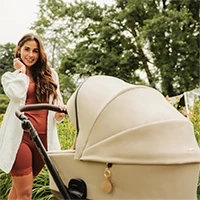
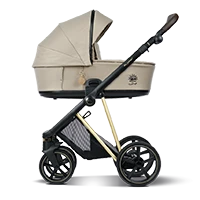

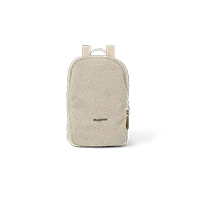
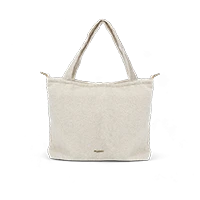

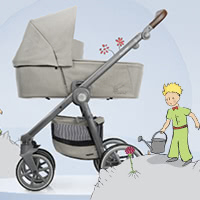
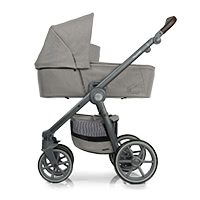

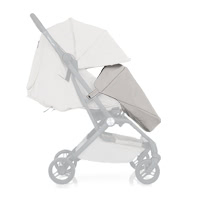

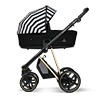 VIGO
VIGO 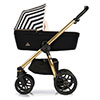 VITA HOPE
VITA HOPE 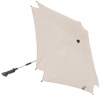 Limited Edition Parasol
Limited Edition Parasol 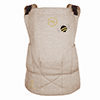 Limited Edition Baby Carrier
Limited Edition Baby Carrier 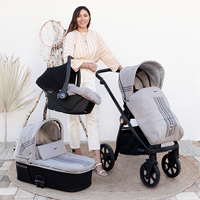
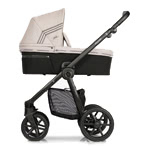 VITA HOPE
VITA HOPE 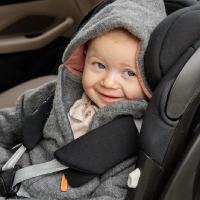 Child seats
Child seats 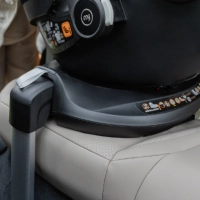 All Isofix Bases
All Isofix Bases 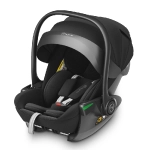 AURAᵉʳᵍᵒ
AURAᵉʳᵍᵒ 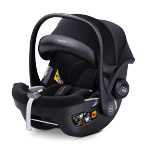 Aura Pro
Aura Pro 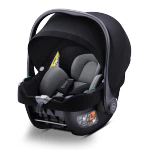 Beam
Beam 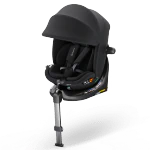 Cyro 360
Cyro 360 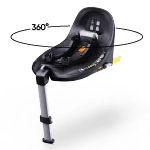 Base 360
Base 360 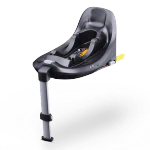 Base Static
Base Static 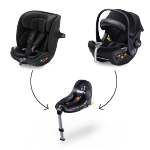 Capsule System
Bundle
Capsule System
Bundle 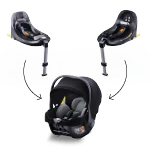 Beam Bundle
Beam Bundle 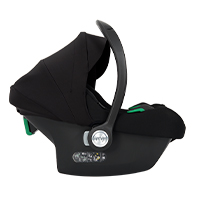 Avionaut Cosmo
Avionaut Cosmo 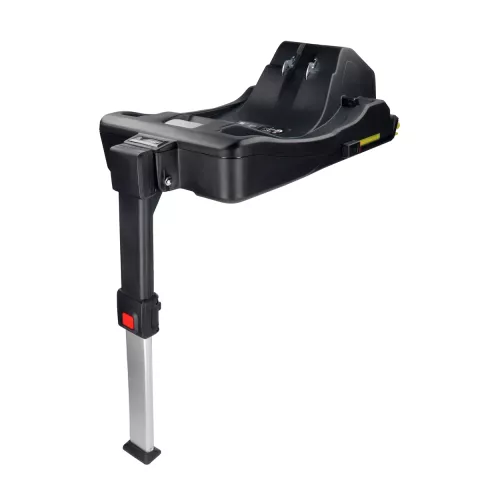
 Black Friday Sale
Black Friday Sale
 Reviews
Reviews  Read reviews
Read reviews  Write a review
Write a review 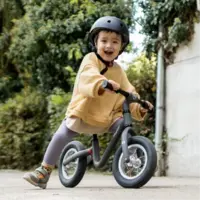
 Home
Home  Fabric sample
Fabric sample  Baby carriers
Baby carriers 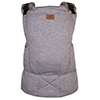 LUVA
LUVA 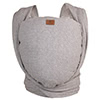 NAMI
NAMI 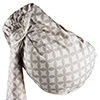 NAMI with ring
NAMI with ring  Accessories
Accessories  Vouchers
Vouchers  Discover my junior®
Discover my junior®  About us
About us  In your vicinity
In your vicinity  All my junior
All my junior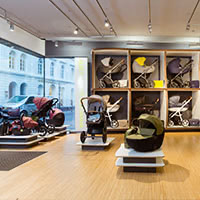 Flagship Store
Aachen
Flagship Store
Aachen 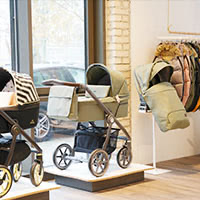 Flagship Store
Hamburg
Flagship Store
Hamburg 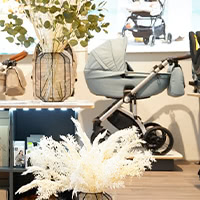 Flagship Store
Salzburg
Flagship Store
Salzburg  Flagship Store Binzen
Flagship Store Binzen
 Flagship Store
Krefeld
Flagship Store
Krefeld 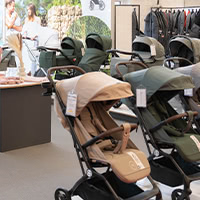 Studio Cologne
Studio Cologne  Studio Trier
Studio Trier  Studio Braunschweig
Studio Braunschweig
 Studio Metzingen
Studio Metzingen
 my junior® pram in
Switzerland
my junior® pram in
Switzerland  Help and Contact
Help and Contact  Useful
Useful  Career
Career  Press
Press 


